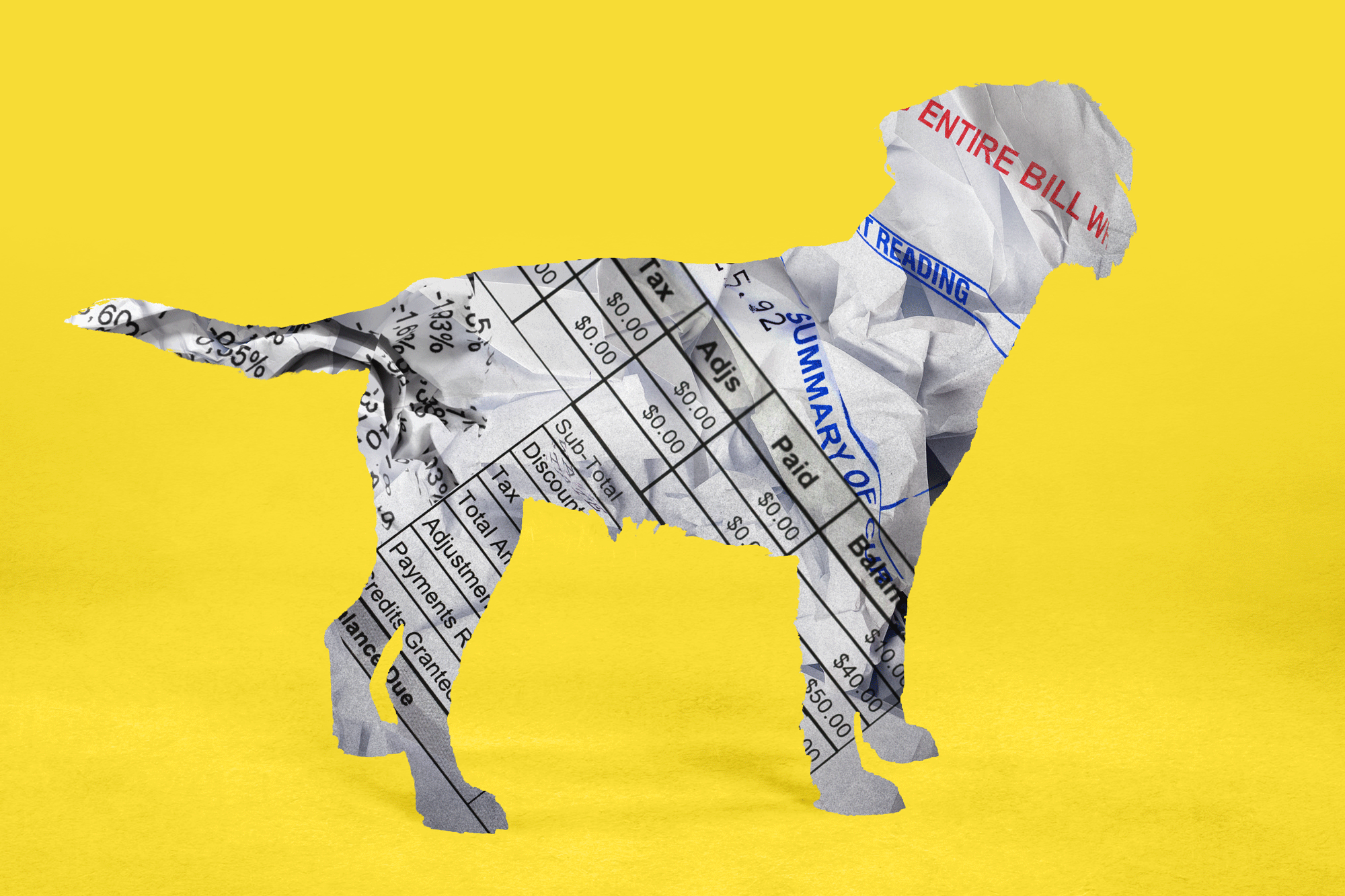Pet Policies : O.C. Firm Struggles to Sell Insurance for Veterinary Bills
ANAHEIM â Listening to clients like Jon Snyder, youâd think Veterinary Pet Insurance Co. would have the cat and dog world on a short leash.
Policy in hand, Snyder went to Anaheim-based VPI âcrying like a big babyâ when Jenna, one of many Great Danes he has owned, was diagnosed with bone cancer in her right front leg. His veterinarian was talking about amputation for a dog so active that her nickname is âRoadrunner.â
âYou tell me how a 140-pound Great Dane is going to get by without a front leg,â says Snyder, who runs an embalming service in Upland.
As it turned out, his VPI insurance covered a bone transplant, even though itâs performed only by a pet doctor in Colorado. Today, Jenna is walking around on the leg bone of a Newfoundland that was killed in an accident. And of her $7,456 in medical bills, including follow-up chemotherapy, VPI has covered $5,612.
Jack L. Stephens, a veterinarian who helped start VPI in 1982, believes that up to half the people who take cats and dogs to the vet are potential customers, if theyâd only consider how often dialysis, pacemakers, radiation and other expensive procedures are recommended for pets.
Yet VPI, the only national pet insurer, has spent much of its life trying to keep regulators from putting it out of its misery. Profits have been elusive and customer discontent has run high over slow claims payments and lack of coverage for routine pet care.
After 15 years, VPI has just 75,000 policies in effect--about one for every 1,000 dogs and cats taken to veterinarians, Stephens estimates. Indeed, VPI posted such huge losses early in the decade that it was taken over briefly by the California Department of Insurance. And it must raise at least $1.5 million in new capital soon or be taken over by the state again. Like any struggling small business, VPI has tried to adapt. Itâs now betting on a soon-to-be offered new product: a well-care plan covering routine veterinary services for cats and dogs. Hey, if there are limousine and tuxedo services for dogs--and there are--why not pet HMOs?
VPIâs existing policies cover 6,000 conditions but exclude already-existing ailments and routine care. Breed-specific problems, like displaced hips in St. Bernards or skin ailments that afflict bulldogs, also are excluded, although VPI hopes to start selling such coverage for an additional charge this summer.
Policyholders pay the first $40 for treating illnesses or injuries from accidents. VPI pays 80% of the next $180 and 100% of the rest, up to limits that vary depending on the procedure and which of five VPI policies is purchased.
The average policyholder pays $165 a year, but premiums vary widely depending on the petâs age and payment caps for various procedures.
*
Snyder was paying $175 a year to insure Jenna, including an extra $29 to double his coverage for cancer. Otherwise, the insurance payments would have been capped at $4,000.
Pet health insurance has been available since the 1940s in England, where 11% of owners have it, and since the â50s in Sweden, where 16% have it, Stephens says.
VPI was started by 750 veterinarians after a state vetsâ committee could find no major U.S. insurer willing to offer it. Stephens, who had headed the committee, agreed to run the new company.
He says heâs shooting for 3% of the domestic pet market. So far, though, Americans havenât bitten.
After a four-month takeover by the Insurance Department in 1991, VPI went through five years of state-supervised ârehabilitationâ that ended last June. Its reserves, however, are still just $460,000, and the law requires at least $2 million by the end of the decade.
âWeâre not going to wait till the end of 1999, either,â says Ramon Calderon, the Insurance Departmentâs chief examiner for VPI. âSometime between now and then, the moneyâs got to materialize.â
Stephens declined comment on how the money would be raised, though he says heâs optimistic. Last year, he was quoted in financial and veterinary publications as saying a stock sale to the public was likely.
VPI lost $700,000 last year on $7 million in policy sales. But Stephens says it was a year of onetime costs that will pay off: $300,000 to help free VPI from debt, $140,000 for modern claims-paying and underwriting software and $150,000 for an accounting change.
With a boost from software purchased last year, VPI has addressed its biggest problem: It now pays claims in about 10 days, compared with 120 days back in 1991. Referrals from happy clients have now helped put the company on track to double revenue to $14 million this year, Stephens says.
He has taken out a second mortgage on his home to help buy out holders of VPI debt who werenât willing to trade it for stock. The companyâs debt load, $1.8 million a year ago, is now zero, and Stephensâ ownership has risen from 5% to 15%.
Last year the company also spent $115,000 to test the well-care plan covering shots, worming, neutering, parasite exams, even teeth-cleanings--a service craved by clients but never before provided by VPI.
The program is expected to be offered widely later this year. As currently planned, participants insured by VPI will pay $99 a year to join; for others itâs $149. In return, they get vouchers for routine veterinary services along with stacks of discount coupons provided by manufacturers of everything from cat breath fresheners to doggie seat belts.
Odd as it sounds, the well-care plan just might be the thing to put VPI in the black. Firemanâs Fund Insurance Co., a medium and large business specialist, offered cheap policies to cover cat and dog catastrophes for four years. Calls flooded an 800 number, but the Novato-based company sold fewer than 7,000 policies. The biggest reason was the lack of a well-care plan, spokesman John Kotero says.
Firemanâs decided that well care was too much trouble and quit the business. But if VPI can figure it out, âmore power to them,â Kotero says. âWe feel there is a strong demand in the market for it.â
But skepticism remains high. Leslie Sinclair, a doctor of veterinary medicine and director of companion animal care for the Humane Society of the United States, estimates that 30 other pet insurance plans have failed over the last 25 years. The society also fears that insurance could drive up veterinariansâ costs through paperwork tangles and limit their flexibility in providing services.
Sinclair says many local veterinary hospitals and pet doctors already offer routine care packages for kittens and puppies, and a few have policies for lifetime care. Those plans limit pet ownersâ choice of vets, unlike VPI, which will pay any licensed pet doctor.
She advises consumers to consider local plans, or to âself-insureâ their pets by setting aside a few bucks from each paycheck for Fidoâs declining years.
*
The biggest challenge for pet insurers, Sinclair says, is that most owners get their health insurance subsidized at work and just canât bring themselves to buy coverage for a cat or dog, no matter how affectionate they feel toward the pet.
A 1995 American Animal Hospital Assn. survey found that 69% of respondents had no interest in pet health-care plans. Another 13% expressed only qualified interest, with many wanting routine exams and vaccinations covered. One suggested coverage should include flea baths and grooming.
âPeople donât think of their animals the way they think of themselves,â said Victoria Campbell, a spokeswoman for the American Society for the Prevention of Cruelty to Animals.
At least not until something serious happens.
Elizabeth Donnelly of Corona del Mar remembers setting aside a pet insurance mailing, meaning to follow up on it later. She never did. Her 7-year-old Labrador-golden retriever mix, Max, has developed spinal disc problems, but itâs too late for insurance.
Her neighbors recently raised $1,600 at a garage sale to help defray potential surgical costs of $2,000.
âI wish I had just sat down and written out a check,â Donnelly says.
(BEGIN TEXT OF INFOBOX / INFOGRAPHIC)
Veterinary Pet Insurance
* Headquarters: Anaheim
* Licensed: Since 1982
* President: Jack L. Stephens
* Business: Pet insurance provider
* 1996 gross sales: $7 million
* Policies in effect: 75,000
* Employees: 40
* Approved: 45 states and the District of Columbia
HOW PET INSURANCE WORKS
Pet owners may select a plan covering only basic veterinary care or a higher-priced plan covering more expensive procedures such as chemotherapy and dialysis.
* Rates: Average policy costs $165 per year, per pet. Rates vary according to age of pet, type of plan selected and regional veterinary charges
* Animals covered: Dogs and cats only
* Not covered: Previously existing ailments, medical problems common to certain breeds, spaying, neutering, parasitic conditions and preventive care such as vaccines
* Veterinary options: Can go to any licensed vet
* Preferred Pets Plus: $99 annual membership plan providing discounts on vaccines, physical exams, worming, teeth cleaning, spaying, neutering and other procedures
Source: Veterinary Pet Insurance; Researched by JANICE L. JONES / Los Angeles Times
Los Angeles Times
More to Read
Inside the business of entertainment
The Wide Shot brings you news, analysis and insights on everything from streaming wars to production â and what it all means for the future.
You may occasionally receive promotional content from the Los Angeles Times.











